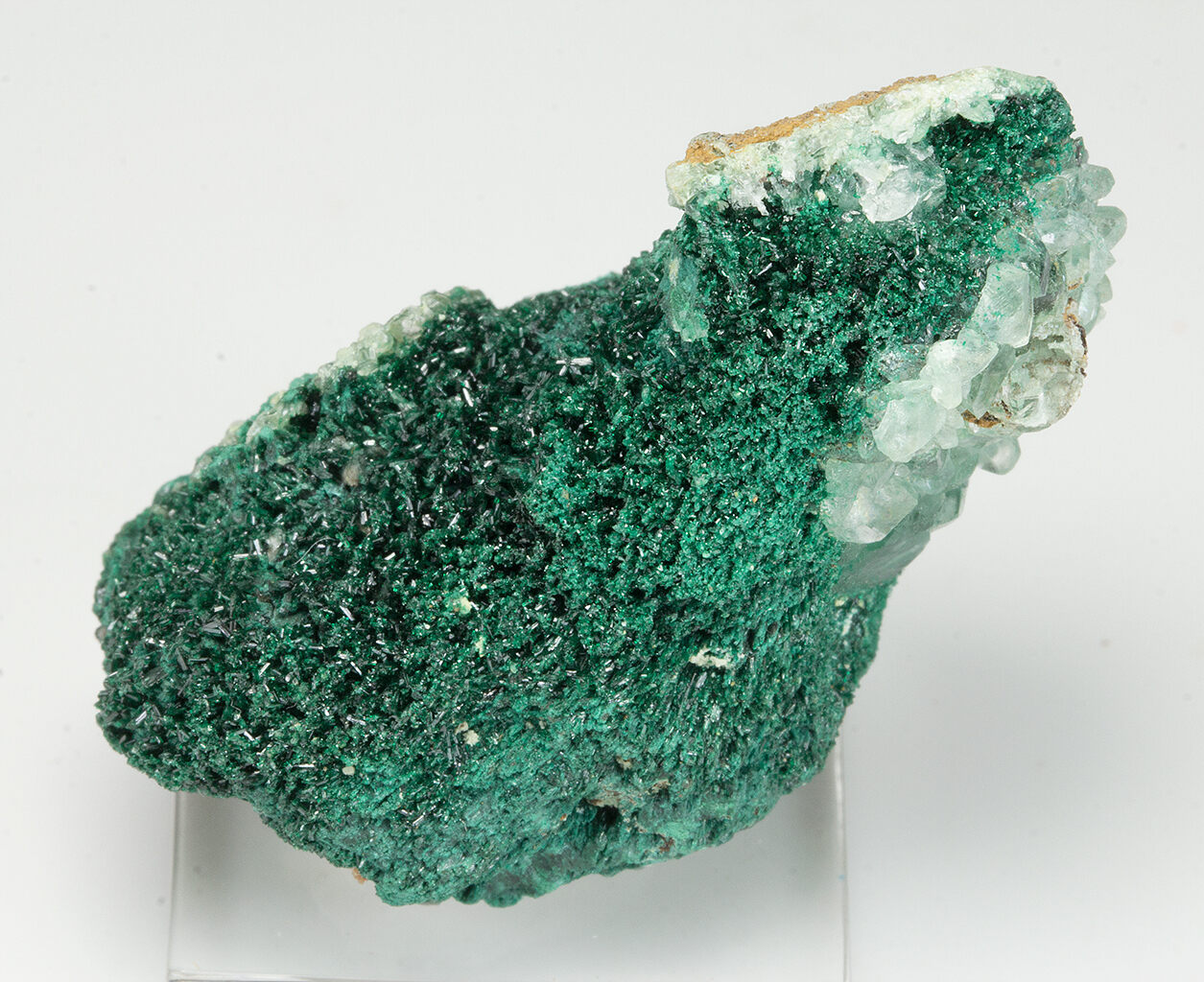
Atacamite is a striking green mineral that catches the eye with its vibrant hues. Found primarily in arid regions like the Atacama Desert in Chile, this mineral has fascinated scientists and collectors alike. But what makes atacamite so special? Atacamite is a copper chloride hydroxide mineral, often forming in oxidized zones of copper deposits. Its unique crystal structure and vivid color make it a favorite among mineral enthusiasts. Beyond its beauty, atacamite has practical uses, including applications in pigments and even as a minor ore of copper. Ready to learn more? Dive into these 40 intriguing facts about atacamite!
Key Takeaways:
- Atacamite, a striking green mineral found in arid regions, has historical significance and potential environmental applications. It fluoresces under UV light and was used by ancient civilizations for pigments and decorative purposes.
- Atacamite's unique properties, such as its fluorescence and formation in coastal regions, make it a fascinating subject for scientific research. It has been studied for its potential use in environmental remediation and its role in the formation of secondary copper deposits.
What is Atacamite?
Atacamite is a fascinating mineral with a rich history and unique properties. This copper chloride hydroxide mineral is often found in arid regions, particularly in Chile's Atacama Desert, from which it gets its name. Let's dive into some intriguing facts about this captivating mineral.
-
Atacamite is a secondary mineral formed from the oxidation of primary copper minerals.
-
It was first discovered in the Atacama Desert, Chile, in 1801.
-
The mineral's name is derived from the Atacama Desert.
-
Atacamite has a striking green color, often described as emerald green.
-
It forms in arid, oxidizing environments, typically in the upper oxidized zones of copper deposits.
Physical Properties of Atacamite
Understanding the physical properties of Atacamite can help in identifying and appreciating this mineral. Here are some key characteristics:
-
Atacamite has a hardness of 3 to 3.5 on the Mohs scale.
-
It exhibits a vitreous to adamantine luster.
-
The mineral has a specific gravity of 3.74 to 3.77.
-
Atacamite crystals are usually prismatic or acicular, forming in clusters or radiating groups.
-
It can also appear as granular or massive aggregates.
Chemical Composition of Atacamite
The chemical makeup of Atacamite is quite interesting and contributes to its unique properties. Let's explore its composition:
-
Atacamite's chemical formula is Cu₂Cl(OH)₃.
-
It contains copper, chlorine, and hydroxide ions.
-
The mineral is part of the halide mineral group.
-
Atacamite can alter to other copper minerals like malachite or chrysocolla over time.
-
It is often associated with other secondary copper minerals, such as brochantite and paratacamite.
Uses and Applications of Atacamite
While Atacamite is not a major industrial mineral, it has some interesting uses and applications. Here are a few:
-
Atacamite is primarily a collector's mineral due to its vibrant color and crystal formations.
-
It is sometimes used in jewelry, although its softness limits its practicality.
-
The mineral can be used as a minor ore of copper in some regions.
-
Atacamite is studied for its potential use in environmental remediation, particularly in removing heavy metals from water.
-
It has historical significance, as ancient civilizations used it for pigments and decorative purposes.
Occurrences and Locations of Atacamite
Atacamite is found in various locations around the world, often in arid regions. Here are some notable occurrences:
-
The Atacama Desert in Chile is the most famous locality for Atacamite.
-
It is also found in the United States, particularly in Arizona and New Mexico.
-
Australia has notable Atacamite deposits, especially in the Broken Hill region.
-
The mineral is present in Namibia, particularly in the Tsumeb Mine.
-
Atacamite can also be found in Greece, particularly in the Laurium mines.
Historical and Cultural Significance of Atacamite
Atacamite has played a role in various cultures and historical contexts. Here are some interesting facts:
-
Ancient Egyptians used Atacamite as a green pigment in their artwork.
-
The mineral was used in pre-Columbian South America for decorative purposes.
-
Atacamite was believed to have protective properties in some ancient cultures.
-
It has been referenced in historical texts and mineralogical studies since its discovery.
-
The mineral's vibrant green color made it a popular choice for ornamental objects in ancient times.
Scientific Research and Studies on Atacamite
Atacamite has been the subject of various scientific studies due to its unique properties. Here are some key points:
-
Researchers study Atacamite to understand the oxidation processes of copper minerals.
-
The mineral's structure has been analyzed using X-ray diffraction techniques.
-
Atacamite's potential for environmental remediation has been explored in scientific literature.
-
Studies have investigated the stability and alteration of Atacamite under different conditions.
-
The mineral's role in the formation of secondary copper deposits is a topic of ongoing research.
Fun and Lesser-Known Facts about Atacamite
Here are some fun and lesser-known facts about Atacamite that you might find intriguing:
-
Atacamite can fluoresce under ultraviolet light, displaying a greenish glow.
-
The mineral can form pseudomorphs, where it replaces other minerals while retaining their shape.
-
Atacamite is sometimes found in the corrosion products of ancient bronze artifacts.
-
The mineral has been used in experimental art projects due to its vibrant color.
-
Atacamite can form in the presence of saltwater, making it a unique mineral in coastal regions.
The Final Word on Atacamite
Atacamite, a fascinating mineral, holds a treasure trove of unique properties and historical significance. Found primarily in arid regions like the Atacama Desert, this mineral boasts a striking green hue due to its copper content. Its crystal structure and formation process make it a subject of interest for geologists and collectors alike. Beyond its beauty, atacamite has practical applications in copper mining and metallurgy.
Understanding atacamite's role in ancient cultures and its modern-day uses provides a well-rounded appreciation for this mineral. Whether you're a mineral enthusiast or just curious, knowing these facts enriches your knowledge of the natural world. So next time you come across a piece of atacamite, you'll see more than just a pretty stone; you'll recognize a piece of Earth's intricate history.
Frequently Asked Questions
Was this page helpful?
Our commitment to delivering trustworthy and engaging content is at the heart of what we do. Each fact on our site is contributed by real users like you, bringing a wealth of diverse insights and information. To ensure the highest standards of accuracy and reliability, our dedicated editors meticulously review each submission. This process guarantees that the facts we share are not only fascinating but also credible. Trust in our commitment to quality and authenticity as you explore and learn with us.


